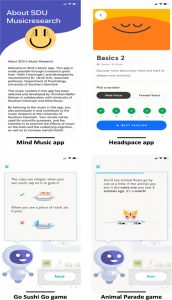Adverse Events are Common with Meditation
By John M. de Castro, Ph.D.
“Symptoms such as pain, pressure, involuntary movements, headaches, fatigue, weakness, gastrointestinal problems, and dizziness were all reported in people who were enthusiastic meditators.” – TimesofIndia
People begin meditation with the misconception that meditation will help them escape from their problems. Nothing could be further from the truth. In fact, meditation does the exact opposite, forcing the meditator to confront their issues. In meditation, the practitioner tries to quiet the mind. But, in that relaxed quiet state, powerful, highly emotionally charged thoughts and memories are likely to emerge. The strength here is that meditation is a wonderful occasion to begin to deal with these issues. But often the thoughts or memories are overwhelming. At times, professional therapeutic intervention may be needed.
states. There are, however, few systematic studies of the extent of negative experiences. In general, the research has reported that unwanted (negative) experiences are quite common with meditators, but for the most part, are short-lived and mild. There is, however, a great need for more research into the nature of the experiences that occur during meditation.
In today’s Research News article “Prevalence, predictors and types of unpleasant and adverse effects of meditation in regular meditators: international cross-sectional study.” (See summary below or view the full text of the study at: https://www.ncbi.nlm.nih.gov/pmc/articles/PMC8693904/ ) and colleagues recruited online adult meditation practitioners and had them compete a measure of previous mental disorders, mindfulness, repetitive negative thinking, neuroticism, and meditation-related adverse events.
They found that 22% of the participants reported meditation-related adverse events with 13% of the participants reporting moderate to severe adverse events. Participants with previous mental disorders were more likely to report adverse events and with higher severity. Participants with repetitive negative thinking and neuroticism were also more likely to report adverse events while mindfulness reduced the likelihood of adverse events. Adverse events were more likely to occur during a meditation retreat.
So, adverse events are common with meditation especially in meditators who have a history of rumination and prior mental disorders. It is unclear, however, whether these experiences lead to healing or further suffering. Regardless there is a need for care with meditation particularly with people with preexisting mental issues.
“The fact that meditation can cause altered states, for example, isn’t news: It’s something that people have been talking about for centuries. What we haven’t been very good about is measuring the impact and significance of these states on individual participants.” – Willoughby Britton
CMCS – Center for Mindfulness and Contemplative Studies
This and other Contemplative Studies posts are also available on Twitter @MindfulResearch
Study Summary
Pauly, L., Bergmann, N., Hahne, I., Pux, S., Hahn, E., Ta, T., Rapp, M., & Böge, K. (2021). Prevalence, predictors and types of unpleasant and adverse effects of meditation in regular meditators: international cross-sectional study. BJPsych Open, 8(1), e11. https://doi.org/10.1192/bjo.2021.1066
Abstract
Background
Meditation is commonly implemented in psychological therapies since the ‘third wave’ of cognitive–behavioural therapy has increased the focus on mindfulness-based interventions. Although extensive research literature demonstrates its benefits, little is known about potential adverse effects.
Aims
The aim of this study is to report the prevalence, type and severity of particularly unpleasant meditation-related experiences in the largest cross-sectional study on this topic to date, with 1370 regular meditators.
Method
The participants were asked whether they ever encountered particularly unpleasant experiences as a result of their meditation experience. For the first time, the type and severity of those experiences were assessed and the association with several predictors, such as pre-existing mental disorders, were explored via logistic and linear regression.
Results
Similar to previous studies, 22% of participants (95% CI 20–24) reported having encountered unpleasant meditation-related experiences, and 13% of participants (95% CI 3–5) reported experiences that were categorised as adverse. Those were mostly of affective, somatic and cognitive nature. Unpleasant meditation-related experiences were more likely to occur in participants with pre-existing mental illnesses (P = 0.000, 95% CI 1.25–2.12).
Conclusions
This study demonstrates that unpleasant meditation-related experiences are prevalent among meditators and, to a relevant extent, severe enough to warrant further scientific inquiry. Longitudinal studies are needed to examine whether the unpleasant meditation-related experiences are merely negative and thus should be avoided, or are an inherent part of the contemplative path.
https://www.ncbi.nlm.nih.gov/pmc/articles/PMC8693904/





